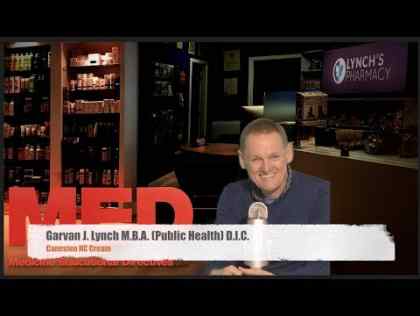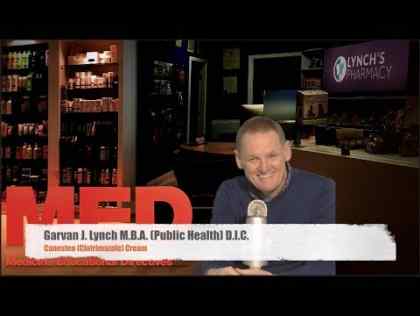Why do babies get nappy rash?
- Nappy rash is very common – most babies will get it at some point. It's not usually a 'disease', but just an irritation of the skin.
- A wet or dirty nappy, which has been left touching the skin for too long, is the most common cause of nappy rash. This is especially true of children with diarrhoea.
- Human waste products can turn into ammonia if the nappy isn't changed for a long time. Waste products irritate the baby's skin, which can then start to sting.
- A fungal infection, due to dampness under the nappy, also causes nappy rash.
Everybody has fungi on their skin, but it only grows when conditions are right. This has nothing to do with poor hygiene. It's caused by dampness or changes in the skin conditions. A fungal infection can be unpleasant for the baby because it can sting the skin – especially when the baby wets or dirties its nappy.
- The baby can also get a bacterial infection in the area where the nappy is. This can happen if there's been a small scratch on your baby's skin or if their skin has been weakened by a rash, allowing bacteria to grow easily.
- The baby's skin will be red, warm and swollen, and the baby may also get a fever.
- If your baby has these symptoms, you need to contact your doctor. There may be bright red ring around the anus.
- Other skin conditions, such as infantile eczema, will exacerbate your child's nappy rash.
- Untreated, the baby's skin falls off in big flakes, and pus-filled blisters may develop.
- The nappy dermatitis may spread beyond the nappy region.
What can you do about a nappy rash?
- Some babies only experience it once in a while, whereas others experience it time and again. No one knows the reason for these differences in the skin, but some babies just seem more sensitive than others.
- The best way to treat an ordinary nappy rash, or nappy rash caused by a fungal infection, is to let it get some air. It's a good idea to leave the baby's nappy off for about an hour a few times a day.
- It also helps to change the baby's nappy often. When the rash is at its worst, it may be necessary to change the nappy up to 12 times a day. Dry the baby's bottom carefully after each change.
- It's important to wash the baby's bottom every time you change the nappy.
- If your baby has only wet their nappy, use warm water. If the baby has dirtied their nappy, use a little baby (for sensitive skin) soap, but remember to always rinse in warm water to make sure there is no soap left on the baby's skin.
- Dried on poo can be removed by using ordinary cooking oil on a wad of cotton wool. Do not use baby wipes, as they can sting and dry the skin out and the chemicals in them can make the rash worse.
- If your baby has nappy rash or sensitive skin, it's a good idea to protect it with a thick barrier cream after every wash.
- To protect the red skin, you can use a zinc paste or barrier cream, which is available at the chemist: zinc forms a protective surface over the skin.
- Weak hydrocortisone creams (eg Dermacort) can be used for severe cases, or an anti-fungal ointment, but these should not be used without consulting your doctor first.
- If using cloth nappies, try changing to disposable nappies because they absorb more fluid from the baby's skin.
- Try dressing the baby in woollen underwear on top of the nappy, instead of plastic pants.
- If using disposable nappies, try switching to cloth nappies. Sometimes changing to another type of nappy will help.
What if the nappy rash just gets worse?
If the nappy rash doesn't get better in a few days, or gets worse, talk to your doctor or health visitor.
If the baby's skin turns even more red, warm and swollen and the baby gets a temperature – you should also contact a doctor immediately because the nappy rash may be caused by a bacterial infection that requires medical treatment.
How to tell the differences between nappy rashes?
- An ordinary nappy rash is very red, but not bright red. The baby feels well in general, only feeling a sting when they're wet, or dirty themselves. The redness does not reach into the folds of the skin and disappears a few days after giving their bottom some air, using zinc cream and frequently changing nappies. Get advice from a health visitor or doctor if the rash continues.
- A fungal infection is bright red. Check if the baby is red in the folds of the skin as well. The fungus can grow there too, and there may be spots further out on the buttocks. Your baby will get upset and cry when you change their nappy. The ordinary advice, such as airing the bottom and frequent nappy changes, is often not enough to improve the condition. If zinc paste for children does not help, contact a doctor.
- A bright red, very warm and swollen nappy rash may be caused by a bacterial infection. The baby may be in a bad mood and have a fever. If so, contact a doctor.
References:
http://www.netdoctor.co.uk/conditions/skin-and-hair/a3608/nappy-rash/
https://www.netmums.com/baby/nappy-rash
https://patient.info/health/nappy-rash-leaflet
http://hse.ie/eng/health/az/N//Nappy-rash/Treating-nappy-rash.html
http://raisingchildren.net.au/articles/nappy_rash.html




